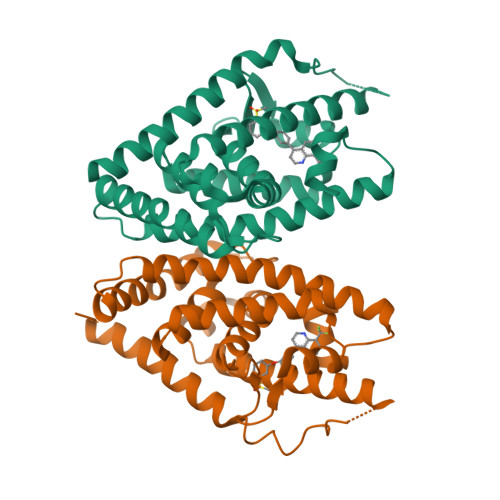脂肪肝/cardiohepatic interactionについて

上図は心肝関連図です
共通の増悪因子のほかに、肝からは心筋に種々の悪性液性物質が影響を与える
心筋のポンプ不全が低酸素化/酸化ストレスで影響する

Complex Structure of LXR with an agonist
- PDB DOI: https://doi.org/10.2210/pdb3KFC/pdb
- Classification: TRANSCRIPTION
- Organism(s): Homo sapiens
- Expression System: Escherichia coli
- Mutation(s): No
- Deposited: 2009-10-27 Released: 2009-12-08
Experimental Data Snapshot
- Method: X-RAY DIFFRACTION
- Resolution: 2.40 Å
- R-Value Free: 0.284
- R-Value Work: 0.238
- R-Value Observed: 0.240
the LXR/RXR complex undergoes a conformational change that leads to the release of co-repressors and recruitment of co-activators, which modulates target gene expression. Altered LXR/RXR signaling contributes to development of HF risk factors and co-morbidities and, consequently, HF.
HF = heart failure; LXR = liver X receptor; RXR = retinoid X receptor.
Transcriptional activity of LXRs is induced in response to elevated cellular levels of cholesterol. Activation of LXRs normalizes reverse cholesterol transport, prevents diabetes-induced inflammation, and reduces the number of pro-inflammatory macrophages . Direct cardiac effects of LXR signaling include the decrease of cardiomyocyte hypertrophy, loss (death), and fibrotic remodeling. LXRs also stimulate angiogenesis within the myocardium and increase the capacity for glucose uptake and utilization (metabolic remodeling) (3).
The aforementioned widespread effects of the LXRs provide an explanation for the contribution of altered LXRs signaling to the pathogenesis of several of HF co-morbidities, including atherosclerosis and vascular disease, hypertension, diabetes, obesity, and chronic kidney disease and consequently to HF
- LXRシグナルが活性化すると心筋細胞は劣化することが確認されている 上図のアゴニストは人工物でX解析像を安定化させるために加えたものである
- シュミレイション上ではこのアゴニストは外して評価する
- LXRの肝臓での活性化は間接的には心筋に作用する
- Cirrhotic cardiomyopathy has been attributed to a cirrhotic proinflammatory state leading to increased cardiomyocyte apoptosis and shift in myosin heavy chain isoform from the a subtype to the weaker b isoform
- Circulatory abnormalities are predominantly due to liver-derived toxic factors causing arterial dilation and hyperdynamic circulation (50). With further progression of liver failure and arterial dilation, the cardiac systolic reserve is exhausted. From that point, the heart is unable to further increase the cardiac output, resulting in arterial underfilling and decreased effective circulatory volume 49, 50, 51.





